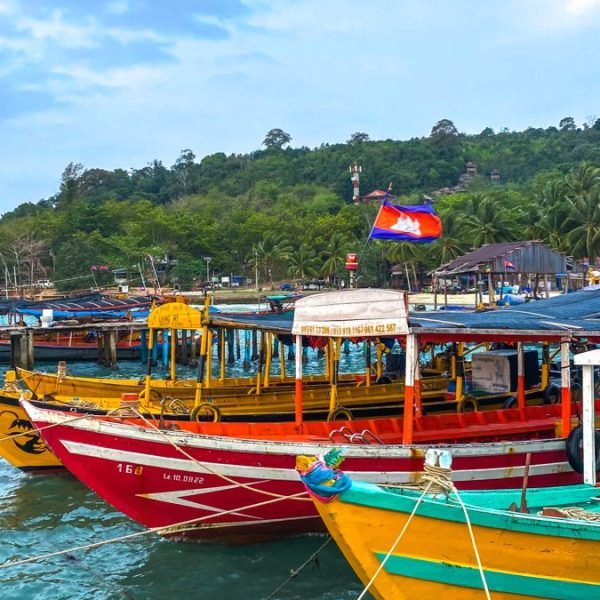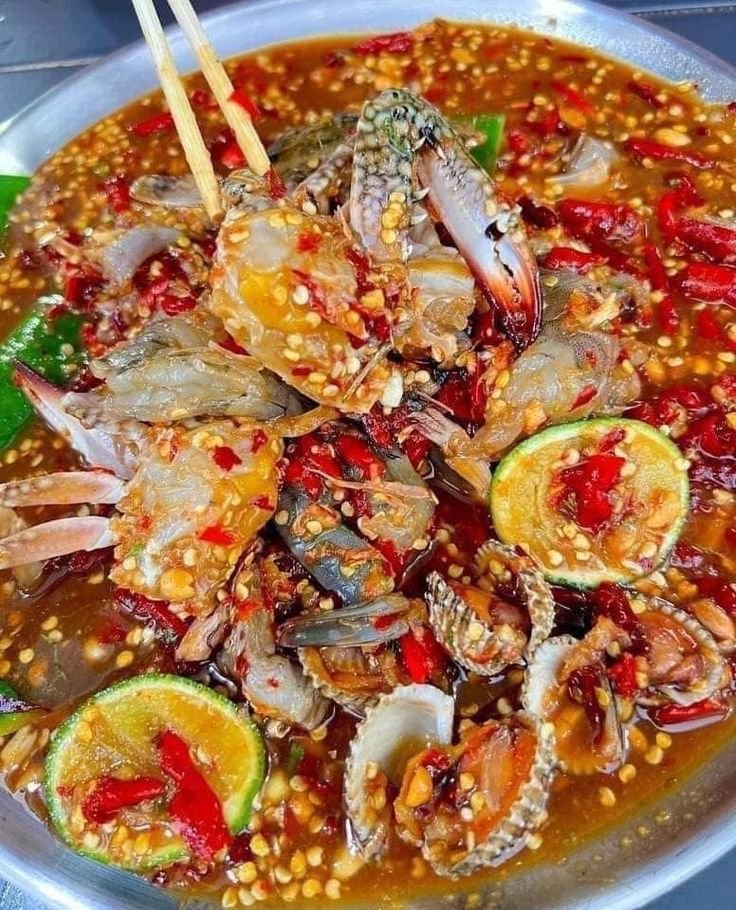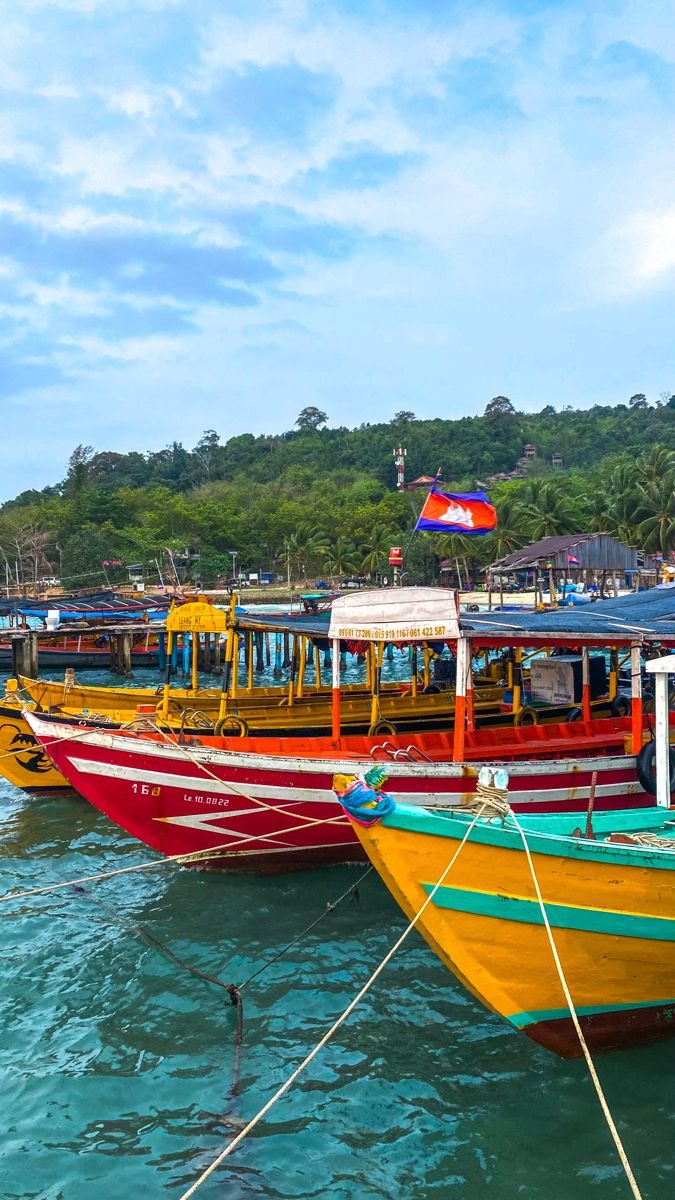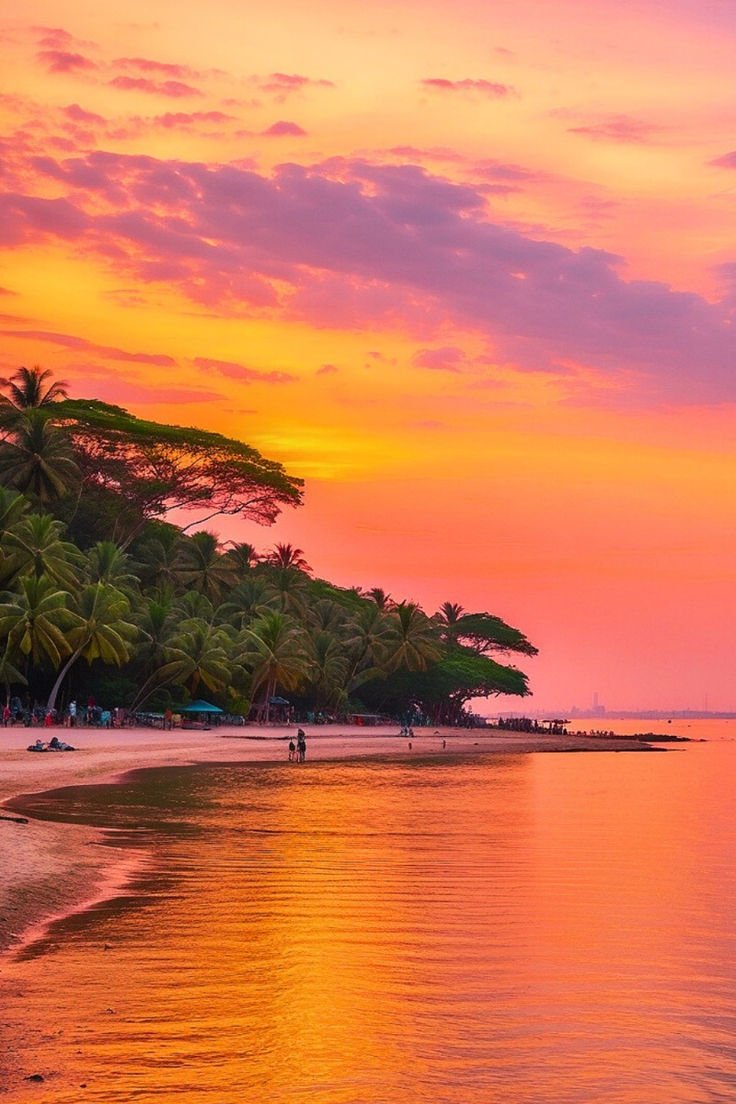Cambodia
Welcome to Cambodia
Cambodia’s history is deeply intertwined with the grandeur of the Khmer Empire, which flourished between the 9th and 15th centuries, leaving behind magnificent temples like Angkor Wat, Bayon, and Ta Prohm. The capital city, Phnom Penh, reflects a mix of French colonial architecture and modern development, with bustling markets, riverside promenades, and important cultural landmarks such as the Royal Palace and the National Museum. Beyond its historical sites, Cambodia boasts beautiful natural attractions including the Tonlé Sap Lake, the largest freshwater lake in Southeast Asia, and pristine beaches in Sihanoukville and Kep. Wildlife sanctuaries and national parks offer opportunities to encounter elephants, gibbons, and other native species in their natural habitats. Cambodia’s people are known for their resilience and warmth, having rebuilt their nation after decades of conflict. Visitors will find a welcoming atmosphere, delicious cuisine, and vibrant traditions that enrich every journey.
1.
Timeless Ancient Temples: No visit to Cambodia is complete without exploring the awe-inspiring temples of Angkor. These architectural masterpieces, surrounded by lush jungle, offer a glimpse into the grandeur of the Khmer civilization and are among the most important archaeological sites in Southeast Asia.

2.
Diverse Experiences: Whether you want to immerse yourself in history, enjoy thrilling water sports along Cambodia’s coast, experience lively urban culture in Phnom Penh, or relax in tranquil rural settings, Cambodia provides a wide range of activities and destinations to suit all travelers.

Planning Your Trip
Visa Information
Most travelers require a visa to enter Cambodia. The country offers multiple visa options in 2025 to facilitate easy entry:
- Tourist Visa (Type T): Valid for 30 days with a possibility to extend for another 30 days. It costs around $30 if obtained traditionally or $36 for an e-visa. Applicants need a passport valid for at least six months, a recent photo, and a completed application form.
- Business Visa (Type E): Also valid for 30 days with extension options, costing slightly more than the tourist visa.
- Visa on Arrival: Available at major airports and land border crossings, but applying for an e-visa online in advance is recommended for convenience.
- Visa-Free Entry: Citizens of ASEAN countries (Brunei, Indonesia, Laos, Malaysia, Philippines, Singapore, Thailand, and Vietnam) can enter Cambodia without a visa for stays ranging from 14 to 30 days.
Since January 1, 2025, Cambodia has implemented an E-Arrival Card system, requiring travelers to submit their arrival information online at least seven days before entering the country. All COVID-19 related restrictions have been lifted, meaning no tests or vaccine proof are needed for entry.
Best Time to Visit
The ideal time to visit Cambodia is during the dry season, from November to February, when the weather is cooler and more comfortable for sightseeing. This period is also the busiest tourist season. The months from October to April are generally recommended for pleasant weather conditions, while the rainy season (May to October) brings lush green landscapes but can disrupt travel plans due to heavy showers.
Getting To and Around
Getting To Cambodia
- By Air: Cambodia is served by two main international airports—Phnom Penh International Airport and Siem Reap International Airport. These airports have good connectivity with major cities in Southeast Asia and beyond, with airlines such as Cambodia Angkor Airways, Bangkok Airways, and Thai Airways operating flights.
- By Road: Cambodia shares borders with Thailand, Vietnam, and Laos. Travelers can enter by bus or car through various border crossings, with popular routes from Vietnam and Thailand. Buses regularly connect Phnom Penh and Siem Reap with neighboring countries.
- By Water: For a scenic and leisurely approach, boats operate between Cambodia’s seaports like Phnom Penh International Port and Sihanoukville International Seaport and neighboring countries such as Vietnam.
Getting Around Cambodia
Within Cambodia, transportation options include:
- Tuk-tuks and Motorbike Taxis: Popular for short distances in cities and towns.
- Rental Motorbikes or Cars: Suitable for exploring rural areas or traveling between cities independently.
- Buses and Minivans: Connect major tourist destinations like Phnom Penh, Siem Reap, and coastal towns.
- Boat Cruises: Particularly on the Mekong River and Tonlé Sap Lake, offering unique perspectives of Cambodia’s landscapes and culture.z
Accommodation
Cambodia offers a wide spectrum of accommodation options that cater to every type of traveler, from budget backpackers to luxury seekers. Whether you want to stay close to the ancient temples of Angkor, enjoy beachside resorts, or experience urban comfort in Phnom Penh, Cambodia has something to suit your needs.
Accommodation Options
Budget and Mid-Range Options
For travelers on a budget, Cambodia is a haven of affordable guesthouses, hostels, and boutique hotels. In cities like Siem Reap and Phnom Penh, you can find clean, comfortable rooms starting from as low as $5 to $15 per night. These accommodations often include basic amenities such as free Wi-Fi, air conditioning, and sometimes breakfast. Popular budget areas in Siem Reap include around Pub Street and Old Market, where you can easily access restaurants and nightlife.
Mid-range hotels typically range from $30 to $70 per night and offer more spacious rooms, swimming pools, and additional services like airport transfers and guided tours. For example, the Plantation Urban Resort & Spa in Siem Reap is a city center oasis known for its lush gardens, serene pool, and excellent on-site restaurant. It combines comfort with a tranquil atmosphere, making it a favorite for travelers who want a peaceful retreat after exploring the temples.
Luxury and Boutique Hotels
For those seeking luxury, Cambodia boasts several 4- and 5-star hotels and resorts that provide world-class amenities. Many of these are located near major attractions or along the coast. The Golden Temple Boutique in Siem Reap is renowned for its outstanding hospitality, beautiful pools, and prime location near Pub Street and Angkor Wat. Guests enjoy personalized tours, cultural shows, and complimentary meals, making it a perfect base for a luxurious cultural experience.
In Phnom Penh, luxury hotels often feature elegant colonial architecture, rooftop bars with panoramic city views, and spa facilities. Beach destinations like Sihanoukville and Kep offer upscale resorts with private beaches, infinity pools, and water sports facilities.
Unique Stays
For a more unique experience, Cambodia also offers boutique guesthouses, eco-lodges, and capsule hotels. Capsule hotels provide compact, modern pods ideal for solo travelers or those looking for a futuristic stay at an affordable price. Eco-lodges in rural areas and near wildlife sanctuaries allow visitors to immerse themselves in nature while supporting sustainable tourism.
Booking Tips
- Book well in advance during the high season (November to February) to secure the best rates and availability.
- Consider locations carefully: staying near major sites like Angkor Wat or central Phnom Penh can save travel time.
- Many hotels offer free cancellation and breakfast included, which adds convenience and value.

Food and Drink
Cambodian cuisine, also known as Khmer cuisine, is a delightful blend of fresh ingredients, bold flavors, and traditional cooking techniques. It reflects influences from neighboring Thailand, Vietnam, and China but maintains its unique identity with distinctive herbs, spices, and dishes.
Must-Try Cambodian Dishes
- Amok Trey (Fish Amok): Cambodia’s national dish, Amok is a creamy, fragrant curry made with fish, coconut milk, kaffir lime leaves, and kroeung (a traditional Khmer spice paste). It is typically steamed in banana leaves and served with rice.
- Nom Banh Chok: A popular breakfast dish consisting of rice noodles topped with a green fish gravy, fresh herbs, and crunchy vegetables. It’s light, refreshing, and widely enjoyed by locals.
- Lok Lak: Stir-fried marinated beef served with rice, fresh salad, and a tangy lime and pepper dipping sauce. It’s a favorite among visitors for its rich yet simple flavors.
- Bai Sach Chrouk: Grilled pork served over broken rice, often accompanied by pickled vegetables and a bowl of clear broth. This is a common street food breakfast.
- Kuy Teav: A noodle soup made with pork or beef broth, rice noodles, and garnished with herbs, lime, and chili. It’s a comforting dish enjoyed any time of day.
Street Food and Markets
Cambodia’s street food scene is vibrant and affordable. Night markets in Siem Reap, Phnom Penh, and Sihanoukville offer a variety of snacks and meals such as grilled meats, fried insects (for the adventurous), fresh fruit shakes, and sweet desserts like sticky rice with mango.
Visiting local markets is also a great way to experience authentic Khmer food. The Central Market in Phnom Penh and the Old Market in Siem Reap are bustling hubs where you can sample fresh produce, spices, and prepared dishes.
Drinks and Refreshments
- Cambodian Coffee: Strong and sweet, often served iced with condensed milk, Cambodian coffee is a must-try. Cafés in major cities and tourist areas serve it alongside Western-style brews.
- Beer: Local beers like Angkor, Cambodia Beer, and Bayon are popular and inexpensive. They pair well with spicy and savory dishes.
- Fresh Fruit Juices and Smoothies: Tropical fruits such as mango, pineapple, watermelon, and passion fruit are blended into refreshing drinks, perfect for the warm climate.
- Traditional Drinks: Palm wine and rice wine are traditional alcoholic beverages found in rural areas, often homemade and enjoyed during festivals.
Dining Experiences
- Local Restaurants: Small family-run eateries serve authentic Khmer dishes at very reasonable prices. These places offer a chance to taste home-style cooking in a casual setting.
- Upscale Dining: In cities and tourist hubs, there are many restaurants offering gourmet Khmer cuisine with modern twists, as well as international options including French, Italian, and Japanese.
- Cooking Classes: For food lovers, taking a Khmer cooking class is a popular activity. It provides insight into local ingredients, cooking methods, and culture.
Cambodia’s accommodation and food scenes are as diverse and inviting as its landscapes and history. Whether you choose a budget guesthouse or a luxury resort, and whether you savor street food or fine dining, your experience will be enriched by the warmth and flavors of this remarkable country. Prepare to indulge your senses and rest comfortably as you explore the Kingdom of Wonder in 2025.

Must-See Attractions
Cambodia is a country steeped in history, culture, and natural beauty, offering travelers an array of unforgettable sights. From ancient temple complexes to poignant historical sites and vibrant cities, here are the top must-see attractions for your 2025 visit.
- Angkor Wat and the Angkor Archaeological Park
The crown jewel of Cambodia’s attractions, Angkor Wat is the largest religious monument in the world and a UNESCO World Heritage site. Built in the 12th century as a Hindu temple dedicated to Lord Vishnu, it later transformed into a Buddhist site. Its towering spires, intricate bas-reliefs depicting Hindu mythology, and harmonious integration with nature make it a marvel of ancient engineering and artistry. The entire Angkor Archaeological Park spans over 400 square kilometers and includes other remarkable temples such as:
- Bayon Temple: Famous for its serene stone faces carved into towers, representing compassion and wisdom.
- Ta Prohm: Known as the “Tomb Raider Temple,” where giant tree roots intertwine with ruins, creating a mystical jungle atmosphere.
- Banteay Srei: The “Jewel of Khmer Art,” notable for its delicate pink sandstone carvings.
Visitors can explore the park by tuk-tuk, bicycle, or guided tours, with ticket options ranging from one day to a week. Sunrise visits are especially popular for breathtaking views and fewer crowds.
- Phnom Penh – The Capital’s Cultural and Historical Heart
Phnom Penh offers a vibrant mix of colonial architecture, bustling markets, and sobering historical sites. Key highlights include:
- Royal Palace and Silver Pagoda: Stunning examples of Khmer architecture and royal heritage.
- Tuol Sleng Genocide Museum: A former Khmer Rouge prison turned museum, providing a powerful insight into Cambodia’s tragic recent history.
- Choeung Ek Killing Fields: A memorial site dedicated to the victims of the Khmer Rouge regime.
- Russian Market and Night Market: Great places to shop for souvenirs, local crafts, and street food.
The Mekong Riverfront area is perfect for leisurely walks and riverside dining, offering a glimpse into the city’s daily life.
- Kampong Cham and Nokor Wat
Kampong Cham, located along the Mekong River, is a less-visited but culturally rich destination. The Nokor Wat Temple, dating back to the 11th century, showcases unique Khmer architecture and offers a quieter alternative to the more famous temples. Visitors can also enjoy crossing the seasonal Bamboo Bridge, exploring local villages, and taking boat rides on the Mekong to experience traditional fishing and rural life.
- Sihanoukville and Coastal Beaches
For those seeking sun and sand, Cambodia’s southern coast boasts beautiful beaches and islands:
- Sihanoukville: Known for its lively beach scene and gateway to nearby islands.
- Koh Rong and Koh Rong Samloem: Pristine islands with white sandy beaches, crystal-clear waters, and excellent snorkeling and diving opportunities.
- Kep: A quieter seaside town famous for its seafood, especially crab, and the nearby Kep National Park.
- Battambang and Rural Cambodia
Battambang is renowned for its well-preserved colonial architecture, vibrant arts scene, and countryside charm. Visitors can ride the famous bamboo train, explore ancient temples, and witness traditional Khmer village life.
- National Parks and Wildlife Sanctuaries
Nature lovers will appreciate Cambodia’s national parks such as Virachey National Park, home to elephants, tigers, and rare birds, and Ream National Park, known for its mangroves and endangered birds of prey. The Phnom Tamao Wildlife Rescue Center near Phnom Penh offers a chance to see rescued animals like elephants and gibbons in a natural setting.

Must-Do Activities
Beyond sightseeing, Cambodia offers a wealth of engaging activities that allow visitors to immerse themselves in the country’s culture, history, and natural environment.
- Sunrise and Sunset Tours at Angkor Wat
Witnessing the sunrise over Angkor Wat is an iconic experience. Many travelers take early-morning tuk-tuk or bicycle tours to catch the golden light illuminating the temple’s silhouette. Sunset tours at nearby temples like Phnom Bakheng or Pre Rup offer equally stunning views.
- Explore Siem Reap by Bicycle or Tuk-Tuk
Siem Reap, the gateway to Angkor, is perfect for exploring on a bicycle or tuk-tuk. This allows you to visit not only the temples but also local markets, artisan workshops, and the vibrant Pub Street nightlife at your own pace.
- Attend a Traditional Apsara Dance Performance
Experience Cambodia’s rich cultural heritage through an Apsara dance show, which features graceful dancers in elaborate costumes telling ancient stories through movement. Many venues in Siem Reap and Phnom Penh offer dinner performances combining cuisine and culture.
- Mekong River Cruises and Dolphin Spotting
Take a boat cruise on the Mekong River to enjoy scenic views of rural life, floating villages, and lush landscapes. In certain areas, you may spot the rare Irrawaddy dolphins, a unique and endangered species native to the Mekong.
- Visit Local Markets and Try Street Food
Exploring markets such as Phnom Penh’s Russian Market or Siem Reap’s Old Market is a must. Sample local delicacies like Amok Trey (steamed fish curry), Nom Banh Chok (Khmer noodles), and fresh tropical fruits. Street food stalls offer an authentic taste of Cambodian flavors at very affordable prices.
- Take a Khmer Cooking Class
Learn to prepare traditional Cambodian dishes in cooking classes offered in Siem Reap and Phnom Penh. These interactive experiences teach you about local ingredients, spices, and cooking techniques while providing a delicious reward.
- Visit Historical Sites Related to the Khmer Rouge
For a deeper understanding of Cambodia’s recent history, visit the Tuol Sleng Genocide Museum and the Choeung Ek Killing Fields near Phnom Penh. These sites offer sobering but essential insights into the resilience of the Cambodian people.
- Relax on Cambodia’s Beaches and Islands
Spend time unwinding on the idyllic beaches of Koh Rong or Kep. Activities include swimming, snorkeling, diving, and simply soaking up the sun in a tranquil setting away from the crowds.
- Explore Rural Villages and Artisan Workshops
Take village tours around Kampong Cham or Siem Reap to see traditional crafts such as silk weaving, pottery, and wood carving. Engaging with local artisans provides cultural insight and supports community livelihoods.
- Wildlife Encounters and Eco-Tourism
Visit wildlife rescue centers and national parks to see elephants, gibbons, and exotic birds. Some places offer ethical elephant experiences where you can learn about conservation efforts and interact responsibly with these majestic animals.
- Attend the Cambodian Circus (Phare)
Phare, the Cambodian Circus, combines theater, music, dance, and acrobatics to tell stories inspired by Cambodian folklore and contemporary issues. It’s a vibrant and moving cultural experience, especially popular in Siem Reap.
- Explore the Bamboo Train in Battambang
Ride the famous bamboo train, a unique and fun way to experience rural Cambodia. This makeshift railway vehicle runs on old tracks and offers a glimpse into local ingenuity and countryside life.
Cambodia in 2025 is a land of contrasts and wonders, where ancient history meets vibrant modern culture and stunning natural beauty. Whether you are marveling at the grandeur of Angkor Wat, reflecting on history in Phnom Penh, or relaxing on a sun-drenched beach, the country offers countless unforgettable experiences. Engage deeply with its heritage, enjoy its warm hospitality, and discover the many layers that make Cambodia a truly remarkable travel destination.

Travel Tips
Traveling to Cambodia in 2025 promises an enriching experience filled with ancient temples, vibrant culture, and warm hospitality. To make your journey smooth and enjoyable, it’s essential to be well-prepared with practical safety advice, an understanding of local customs, and some basic language skills. Here’s a detailed guide to help you navigate Cambodia confidently and respectfully.
Safety Advice
Cambodia is generally a safe destination, especially in popular tourist areas like Siem Reap, Phnom Penh, and Sihanoukville. However, like many countries, it has its share of risks that travelers should be aware of to stay safe.
- Landmines and Unexploded Ordnance (UXO)
Cambodia’s tragic history means that some rural and remote areas still contain unexploded landmines and ordnance. That said, tourist zones, including the Angkor Archaeological Park and major cities, are thoroughly cleared and safe.
- Tip: Always stick to marked paths when exploring temples or rural areas, and avoid hiking alone in isolated forests unless accompanied by a certified guide. Visiting the Cambodian Landmine Museum near Siem Reap can provide valuable insight into this history and support ongoing clearance efforts.
- Road Safety
Road travel is Cambodia’s biggest safety concern due to poor infrastructure, lax enforcement, and unpredictable driving behavior.
- Motorbikes: Motorbikes are a popular way to get around, but accidents are common. Always wear a helmet, even for short rides, and avoid riding if you are inexperienced. Use reputable ride-hailing apps like Grab or PassApp for safer, fixed-price transport.
- Night Travel: Avoid traveling by road after dark, especially on buses or motorbikes, due to increased risk of accidents and poor visibility on roads with potholes or no lighting.
- Tuk-tuks and Taxis: Negotiate fares before starting your journey and keep your belongings secure. Be cautious of scams involving overcharging or detours.
- Petty Crime and Scams
Petty theft, such as pickpocketing and bag snatching, is common in crowded places like markets, bus stations, and tourist sites.
- Tips to Avoid Theft: Use a crossbody bag with zippers, keep bags close to your body, and avoid carrying large amounts of cash or flashy jewelry. When riding tuk-tuks, loop your bag strap around your leg or hold it securely in your lap.
- Scams: Be wary of overly friendly strangers offering unsolicited help or deals that seem too good to be true. Avoid gambling with strangers to prevent falling victim to common scams.
- Health and Emergencies
Cambodia’s healthcare infrastructure is limited outside major cities.
- Medical Care: In Phnom Penh, dial 119 for medical emergencies. Outside the capital, contact hospitals directly. Carry basic first aid supplies and any necessary medications.
- Water and Food Safety: Drink bottled or filtered water and avoid ice cubes from uncertain sources. Eat freshly cooked food and peel fruits yourself to prevent foodborne illnesses.
- Natural Hazards: The monsoon season (May to October) brings heavy rains and flooding, especially in rural areas. Check weather forecasts and avoid travel during severe weather.
- General Safety Tips
- Stay alert, especially after dark, and avoid walking alone in poorly lit or isolated areas.
- Keep copies of your passport and important documents separate from the originals.
- Use hotel safes or secure lockers for valuables.
- Register with your embassy or consulate upon arrival if possible.
Local Customs
Understanding and respecting Cambodian customs will enrich your interactions and help you avoid unintentional offenses.
- Respect for Religion and Royalty
Cambodia is predominantly Buddhist, and religion plays a central role in daily life.
- Dress Modestly: When visiting temples, cover your shoulders and knees as a sign of respect.
- Remove Shoes: Always take off your shoes before entering pagodas or someone’s home.
- Head and Feet Etiquette: The head is considered sacred, so do not touch anyone’s head, including children. Feet are regarded as unclean; avoid pointing your feet at people, religious objects, or statues.
- Monks: Do not touch Buddhist monks or hand objects directly to them; women especially should avoid physical contact with monks.
Criticism of the royal family is illegal and can lead to serious consequences, so avoid political discussions or negative remarks.
- Social Behavior
- Greetings: The traditional greeting is the “Sampeah,” a slight bow with palms pressed together. It’s polite to return this gesture when greeted.
- Public Displays of Affection: Avoid overt displays of affection in public, as they are considered inappropriate.
- Anger and Loud Behavior: Cambodians value calmness and politeness; avoid showing anger or loud behavior in public.
- Photography: Always ask permission before photographing people, especially in rural areas or religious sites.
- Tipping and Bargaining
- Tipping is appreciated but not mandatory. In restaurants, leaving a 5-10% tip is common.
Bargaining is expected in markets and with tuk-tuk drivers but do so politely and with a smile.
Language Basics
Khmer is the official language of Cambodia. While English is widely spoken in tourist areas, learning a few basic Khmer phrases will enhance your experience and show respect for the local culture.
English Phrase | Khmer Phrase (Pronunciation) | Notes |
Hello | Sua s’dei (soo-ah s-day) | General greeting |
Thank you | Orkun (or-koon) | Expressing gratitude |
Yes | Bat (baht) | Affirmative |
No | Ot (oat) | Negative |
Excuse me / Sorry | Som toh (som toe) | Polite apology or attention |
How much? | Tao man? (tao mahn) | Asking price |
Where is…? | Nov ey? (noh ay) | Asking for directions |
I don’t understand | Khnhom ot chet (knyom oat chet) | Useful if confused |
Toilet | Saloan (sa-loan) | Important for travelers |
Tips for Communication
- Speak slowly and clearly.
- Use gestures or point to objects if needed.
Smile and be patient; locals appreciate the effort even if pronunciation isn’t perfect.
Final Thoughts
Cambodia in 2025 offers a warm welcome to travelers who come prepared. By following essential safety precautions—such as avoiding risky road travel at night, securing your belongings, and staying in well-known areas—you can minimize risks. Respecting local customs, including dress codes, social etiquette, and religious practices, will deepen your connection with Cambodian people and culture. Finally, learning a handful of Khmer phrases will open doors to friendlier interactions and memorable experiences.
With these practical travel tips in mind, you are ready to explore Cambodia’s wonders confidently and respectfully, making your trip not only safe but truly rewarding.

